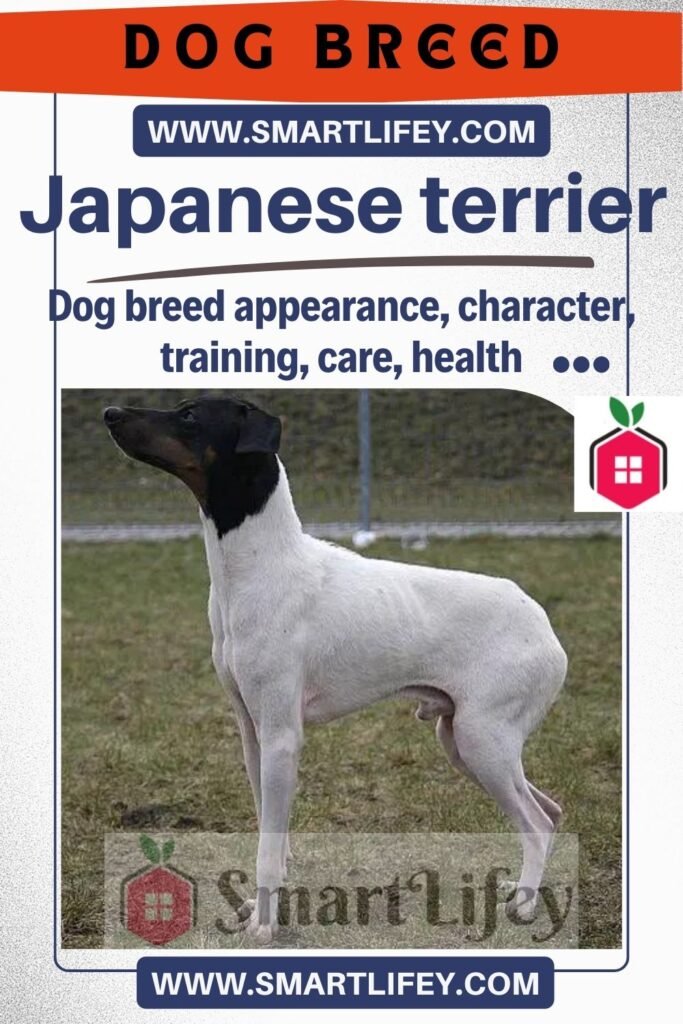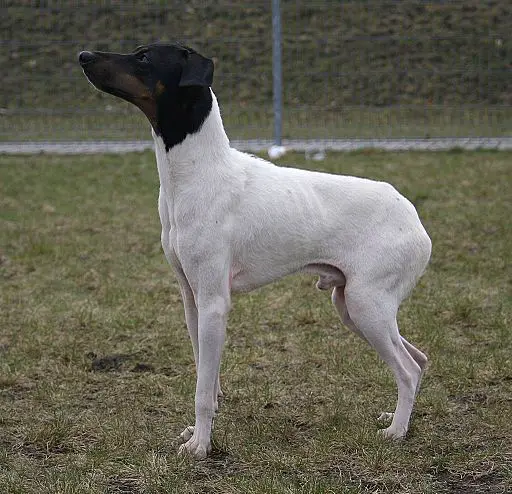
The Japanese Terrier is a small breed of dog originally from Japan. They have earned their popularity due to their compactness, their charismatic personality, their playfulness, and the fact that they don’t require a large space or too rigorous or complex care.
We are going to know much more about these affectionate canines, such as their origin, characteristics, care, character, health and much more.
Origin
Known under the Japanese name of ” nihon teria ” (Japanese pronunciation of “Japanese terrier”). This is a dog that was born from the crossing of a smooth-haired Fox Terrier with another small dog.
These beautiful dogs came to the Japanese country from the Netherlands during the 16th century. At that time, there was still no motive or reason to reproduce this breed, nor was it known what work they were going to perform.
These dogs became more popular among Japanese women, which is why they were constantly referred to as the “ladies’ dog.” Many wealthy women kept one of these canines as a personal companion pet.
It was in 1920 when these dogs began to be seen and when dog breeders began to reproduce them and to make this new breed known. During this reproduction an exhaustive control was carried out so that what we know today as the Japanese Terrier breed could be produced .
Because these dogs are related to the Fox Terrier, they are often called Japanese Fox Terrier, even they are also identified by the name of the Japanese Bull Terrier. However, these two breeds (Fox terrier and Bull terrier) are varieties that come from Great Britain, so they should not be confused.
Characteristics of the Nippon Terrier
These dogs have an elegant bearing, in addition, they are small and compact, so they can be moved easily. The head of the Japanese terrier is in proportion to its body, it is slightly flattened and ends with a medium-long muzzle.
It has thin ears that are resting on the top of the head and the shape they have is similar to that of a V.
With oval eyes that are not too big or too small, these dogs will observe you with a dark and very sweet look. As for the tail, it is thin and narrow at the tip, and it is also slightly curved.Their hair is short, only 2 centimeters long, dense and generally shiny. This breed is characterized by being tricolor, so you can find them with combinations: head with a mixture of black, reddish and white, while the body is mostly white with some black and reddish spots.
Some other characteristics of the breed are:
- Height: between 30 and 33 centimeters.
- Weight: approximately 20 kilograms.
- Hair: smooth, very short and with good shine.
- Health: mostly good.
- Life expectancy: it can vary between 13 and 15 years, depending on the specimen and the care given to it.
Japanese Terrier care
As with all breeds in the world, the Japanese Terrier dog also requires care so that it can remain healthy, energetic and with an appropriate behavior.
Here we will let you know what these cares are, you will learn about each of them depending on the stage in which the pet is.
Puppy
The Japanese Terrier puppy will need care of its own age, one very similar to that which should be given to puppies of any other breed. It will be essential that the little one lives the first 3 months of his life next to his mother so that he learns about the correct behavior of a canine.
The diet must be correct, as this is very important, you should talk to their former caregivers to make sure you do not make a sudden change in the food.
In the event that this is not possible, you can start by giving them quality puppy food, although it would be good if you first consult a veterinarian to find out what is best for him.
It will be essential that the puppy begins to be subjected to hygiene and well-being care (brushing, grooming, check-ups). In this way, it will not be a problem to carry out these activities in the future.
In addition to that, you must start with training and teachings from an early age. In this way, the little one will learn what are the appropriate behaviors that he should have from that age until his growth.
It will also be essential that from this stage, he begins to socialize with other people and canines.
Young dog
Once the dog reaches its juvenile stage, it should continue with the training and training, as this will be its most “rebellious” moment, so it will be very important that it be done in an assertive but loving way.
Contact with the outside world and coexistence with other dogs and strangers, should be done more frequently during this stage, so we will avoid that what was learned as a puppy is forgotten and the dog adopts inappropriate behaviors.
Feeding should now be done with food for dogs of their age. In the event that you are going to feed it with homemade food, you must remember that it must be properly balanced. For this, it is advisable to consult with your trusted veterinarian.
Brushing the coat can be done once a week, by this time, the dog should be used to this routine. As for the baths, they should be done when the dog’s hair is dirty and depending on the amount of physical activity performed.
Although they are small dogs and can live comfortably in an apartment, it will be necessary for them to go for a daily walk, do play activities at home, and have constant contact with other dogs and humans. This can be done by taking walks in the park, so you can have a happy and healthy pet.
Adult
The care of an adult Japanese terrier will not be very different from that of a young one, you only have to take into account the needs of the same according to the age they are.
Visits to the vet should remain regular, as this will prevent recurring diseases or complications in adulthood in dogs.
Character of the Japanese Terrier
If what you want is a dog that is agile and very fast, that keeps you company when you go for a walk to the park and do outdoor activities, this breed is the ideal for you. The Japanese terrier will meet these and other expectations.
They are loving and love to be close to their owners and family, this includes other dogs that are part of their pack or nucleus, so it is not recommended that they be left alone for too long, as they can develop separation anxiety behavior .
They are very loyal and loving dogs, so they will always show their affection and ask for your constant attention, either to receive pampering or to play. It is recommended that during walks you have constant communication with the pet, in this way, a better bond is created between the two.
Sociability
As we mentioned before, these little ones must be taught from a very young age to socialize with other dogs and people who are not part of their usual nucleus. In this way, the pet will be able to interact with others without there being unfavorable behaviors that limit the walks or activities.
Because these dogs have a lively personality, they are very active in games, especially those that develop their intelligence, they are very easy to train, since they are usually always very willing.
They are ideal dogs to grow up in families of all kinds, including those with children, because because they are playful they will always be willing to have fun with children. However, it is important that you teach both the dog and the child to respect each other and not play games that could endanger their physical integrity.
Diseases and Health
The Japanese terrier is a breed of dog that until now, there are no known hereditary diseases. One of their main problems is that, due to their small size, they are often prone to fractures that affect their physical activity.
That is why, when playing games when the dog is a puppy, it is important that special care is taken, both so that they do not injure themselves and so as not to step on them by accident.
In addition, it is recommended that they not be exposed to the presence of very large dogs, as this will prevent very rough games that may cause health problems or make the Japanese terrier vilnerable.
10 curiosities of the Japanese Terrier

- The Japanese terrier was known as “lady dog” because in Japan, they were very popular with the female population.
- The coat of these dogs comes in tricolor varieties, where black, white and reddish stand out.
- It is constantly associated directly with the Fox Terrier breed, from which it is descended but is not part of its varieties.
- It was recognized in 1940 by the Kennel Club of Japan.
- During World War II, the Japanese terriers were on the verge of extinction.
- It is a breed that is not well known worldwide, however, it is still actively bred within Japan.
- They are very familiar dogs and they like to receive attention.
- The Japanese terrier is active, a lover of games and walks in the open air, so he must learn to socialize from a young age.
- They are easy to train, thanks to their intelligence and predisposition.
- They are very healthy dogs, so far no hereditary disease is known, but due to their size, they are prone to fractures.
